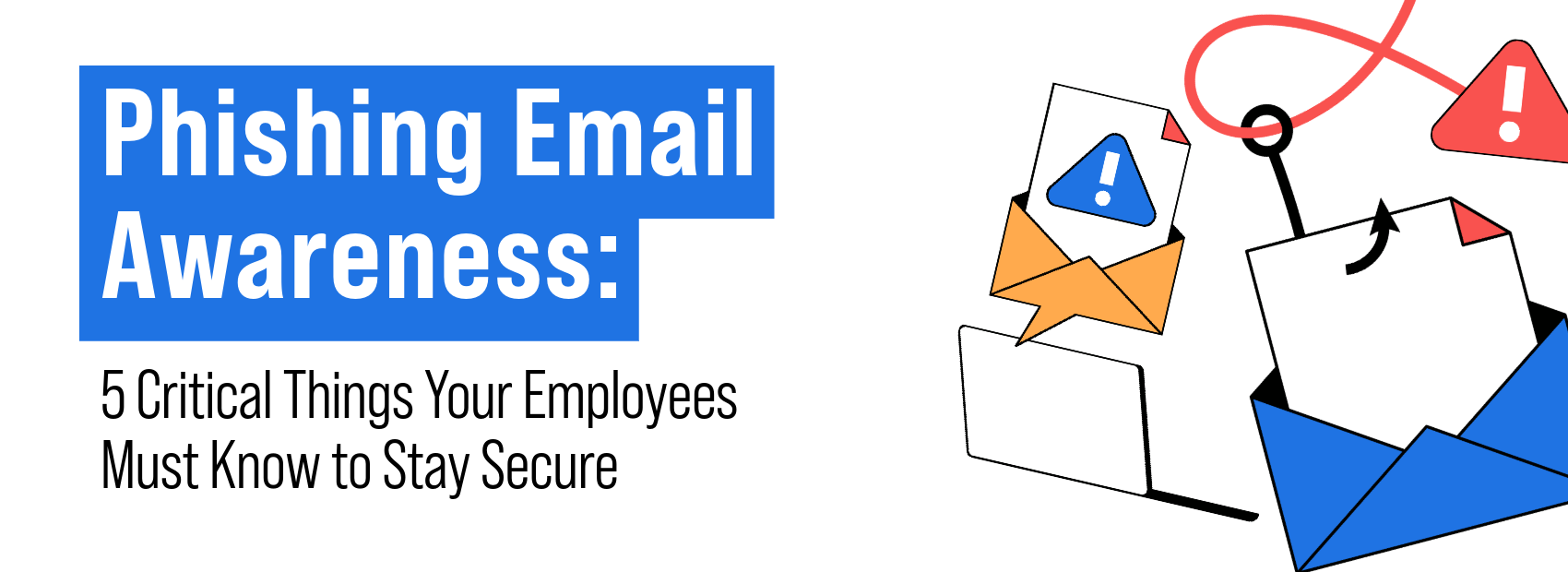Pileus Technologies: Blog

Phishing Email Awareness: 5 Critical Things Your Employees Must Know to Stay Secure
Phishing Email Awareness is one of the most important cybersecurity skills your employees can master. With phishing attacks becoming more sophisticated each year, a single click on a malicious link can compromise your business’s data, reputation, and bottom line. In fact, according to the Cybersecurity & Infrastructure Security Agency (CISA), phishing remains one of the most common and damaging cyber threats in the world.
The good news is that awareness can dramatically reduce risk. By teaching your team how to recognize and handle phishing attempts, you can transform them from your biggest vulnerability into your strongest line of defense. Below are five critical things every employee should know to keep phishing emails from harming your organization.
1. Check the Sender — Not Just the Name
Phishing Email Awareness starts with understanding that cybercriminals often disguise their messages using familiar display names. An email may appear to come from your CEO, bank, or vendor, but the real danger lies in the hidden sender address.
Encourage employees to examine the full email address, not just the display name. For example, “John Smith” may seem safe, but if the domain reads “@company-secure-mail.com” instead of “@company.com,” it’s a red flag. Training users to slow down and verify can prevent many phishing attempts from causing harm.
2. Hover Before You Click
Many phishing attacks hide malicious links behind text that looks legitimate. This is why hovering over a link before clicking is an essential part of Phishing Email Awareness. By placing the mouse pointer over a hyperlink without clicking, employees can preview the real destination.
If the URL is unfamiliar, contains misspellings, or uses a strange domain extension, do not click. For example, a link labeled “View Your Invoice” might redirect to an unrelated site designed to steal credentials. Even legitimate-looking links can be deceptive, which is why link verification should become a reflex.
3. Look for Urgency and Fear Tactics
Phishing Email Awareness isn’t just about technology — it’s also about human psychology. Cybercriminals know that fear and urgency can cloud judgment. Messages warning that “Your account will be suspended in 24 hours” or “Your payment failed” are designed to provoke quick, unthinking action.
Encourage employees to pause when faced with high-pressure language. Taking a moment to verify a claim through a trusted source — like logging into an account directly instead of through an email link — can prevent costly mistakes.
4. Be Wary of Unexpected Attachments
One of the most dangerous phishing techniques involves malicious file attachments. Malware can hide in PDFs, ZIP files, and Microsoft Office documents. If an employee wasn’t expecting a file, even from a known sender, they should confirm its legitimacy before opening it.
Phishing Email Awareness training should include examples of common file-based threats and safe ways to handle them. For instance, contacting the sender by phone or chat before opening an attachment adds an important verification step.
5. Report Suspicious Emails Immediately
Speed is critical when responding to phishing attempts. A single unreported email can lead to widespread damage if others fall for the same trap. Make it easy for employees to report suspicious emails through a dedicated button in your email platform or by forwarding them to your IT team.
Phishing Email Awareness works best when paired with an established reporting culture. When employees know that reporting is encouraged and non-punitive, they’re more likely to act quickly, protecting both themselves and the organization.
Why Phishing Email Awareness Matters Now More Than Ever
With hybrid work and remote teams becoming the norm, cybercriminals have more opportunities to target employees outside the secure office network. According to Proofpoint’s 2024 State of the Phish Report, 84% of organizations experienced a successful phishing attack in the past year. This makes ongoing awareness training not just a compliance checkbox but a business necessity.
Your Next Step: Build a Culture of Awareness
Phishing Email Awareness is not a one-time initiative. It requires continuous reinforcement, real-world simulations, and leadership commitment to cybersecurity. A well-trained team can identify threats more quickly, respond effectively, and help prevent devastating breaches.
Protect your business by starting a phishing awareness program today. Contact our team to schedule a cybersecurity readiness assessment and ensure your employees are prepared for the latest phishing threats.





